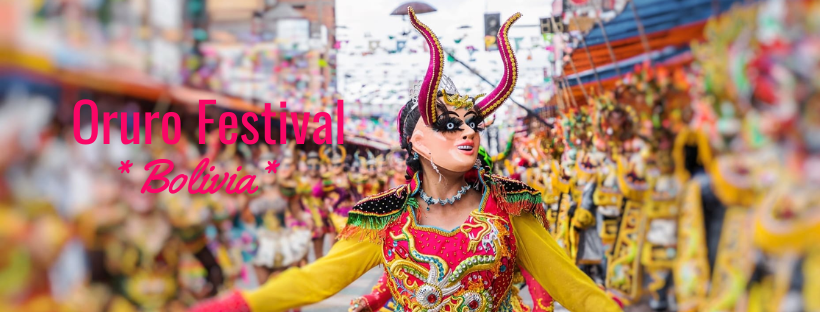
The Oruro Carnival, also known as the Carnaval de Oruro, is one of the most important cultural events in Bolivia and is recognized by UNESCO as a Masterpiece of the Oral and Intangible Heritage of Humanity.
Here's everything you need to know about the Oruro Carnival:
1. Location
The Oruro Carnival takes place in the city of Oruro, located in the highlands of Bolivia, approximately 230 kilometers south of La Paz, the capital city.
2. Origins
The carnival has its roots in indigenous Andean traditions, particularly those of the Uru people who inhabited the region prior to the arrival of the Spanish. It later became intertwined with Catholicism after the Spanish colonization of Bolivia.
3. Religious Significance
The Oruro Carnival is primarily a religious festival that pays homage to the Virgen del Socavón (Virgin of the Mines), a syncretic figure blending elements of Catholicism with indigenous Andean beliefs. The carnival is held in her honor.
4. Duration
The carnival festivities typically last for several days, with the main events occurring over the weekend before Ash Wednesday, marking the beginning of Lent in the Christian calendar. The dates vary each year based on the lunar calendar.
5. Parade
The highlight of the Oruro Carnival is the massive parade, known as the "Entrada," which features thousands of dancers, musicians, and performers. Participants wear elaborate costumes and masks, representing a mix of indigenous Andean symbols, Catholic iconography, and folklore.
6. Diablada
One of the most iconic dances of the Oruro Carnival is the Diablada, or "Dance of the Devils." It tells the story of the struggle between good and evil, with dancers dressed in elaborate devil costumes adorned with colorful masks and feathered headdresses.
7. Other Dances
In addition to the Diablada, various other traditional dances are performed during the carnival, including the Morenada, Caporales, Tobas, and Waca Waca, each with its own unique costumes, music, and choreography.
8. Music
The carnival is accompanied by vibrant music played by marching bands, indigenous Andean instruments, and brass ensembles. The rhythms are lively and energetic, adding to the festive atmosphere of the event.
9. Costumes and Masks
Participants in the Oruro Carnival spend months preparing their costumes and masks, which are often intricately designed and adorned with feathers, sequins, and other decorative elements. Many of the costumes have symbolic meanings tied to Andean mythology and cultural traditions.
10. Tourism
The Oruro Carnival attracts thousands of visitors from Bolivia and around the world who come to witness the spectacular parade and experience the rich cultural heritage of the region. The carnival is a major tourist attraction and a source of pride for the people of Oruro.
Overall, the Oruro Carnival is a vibrant celebration of Bolivian culture, blending indigenous traditions with Catholic rituals in a colorful and dynamic display of music, dance, and art. It serves as a testament to the resilience and creativity of the Bolivian people and is an important expression of national identity and pride.
Discover the vibrant energy of Bolivia's Oruro festival with a tailor-made itinerary crafted by travel experts. Contact us today to delve into the colorful traditions and captivating folklore of this iconic South American celebration.